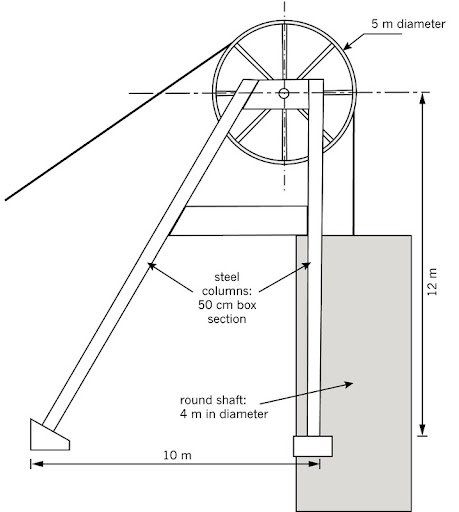What does the Headgear of a mine do?
What does the headgear of a mine do: Technology Mini PAT Answers. Learn how to make a mine shaft headgear for your school project.
Mine headgear constructions support wheel mechanisms for suspending winding cables that transport workers and ore up and down deep level shafts. These strange anthropomorphic structures have become the iconic symbol for mining.
What does the Headgear of a Mine Do
The headgear of a mine is responsible for hoisting, which involves raising and lowering conveyances within the mine shaft. This system enables the transport of miners, equipment, and mined materials such as ore and rocks to and from the surface and various levels of the mine.
The headgear of a mine, sometimes also referred to as the winding tower, pit frame, or shaft headgear, is an integral part of the mining infrastructure. It plays a pivotal role in the operation of the mine, facilitating the movement of miners, equipment, and materials in and out of the mine. This article delves into the specifics of what the headgear of a mine does and why it is essential to mining operations.
Role of the Headgear in a Mine
The primary function of the headgear of a mine is to enable hoisting, the raising and lowering of conveyances within the mine shaft. Hoisting is a crucial mining operation that allows the transport of men and material between the surface and the underground working areas of the mine.
Transporting Miners
The most important role the headgear plays is in transporting miners. The safe and efficient movement of workers into and out of the mine is a vital part of any mining operation. Miners may need to descend hundreds or even thousands of meters below the ground. The headgear, equipped with a hoisting system usually comprising a rope, pulley and a lift or cage, facilitates this vertical travel.
Moving Equipment
The headgear also plays a critical role in moving equipment in and out of the mine. Mining operations require various machinery and tools, including drills, loaders, and vehicles for different tasks within the mine. The headgear system is responsible for transporting these large and heavy pieces of equipment down the shaft into the mine and back to the surface when needed.
Transporting Mined Materials
Extracted minerals and rocks also need to be transported from the depths of the mine to the surface for further processing. The headgear is instrumental in this aspect, as well. The extracted ore is loaded onto the conveyance, which is then hoisted to the surface.
Safety and Emergency Functions
In addition to the regular transportation functions, the headgear system also plays a critical role in emergency situations. In the event of an accident or emergency within the mine, the headgear and the hoisting system can be used for rescue operations to quickly and safely bring miners back to the surface.
The headgear of a mine is a complex and vital piece of engineering that ensures the smooth operation of the mining process. It allows for the transportation of miners, equipment, and materials, and plays a critical role in safety and emergency situations. Understanding its function underscores its importance in the mining industry and highlights the need for proper maintenance and operation to ensure safety and efficiency in mining activities.
How it works mine headgear works
A cable winds around “sheave” wheels on the “headgear” at the top. These cables are attached to a lift that transports miners, machines and ore into and out of the mine.
Materials that are used to make a mine shaft headgear
Modern headframes are built out of steel, concrete or a combination of both. Timber headframes are no longer used in industrialized countries but are still used in developing nations.

